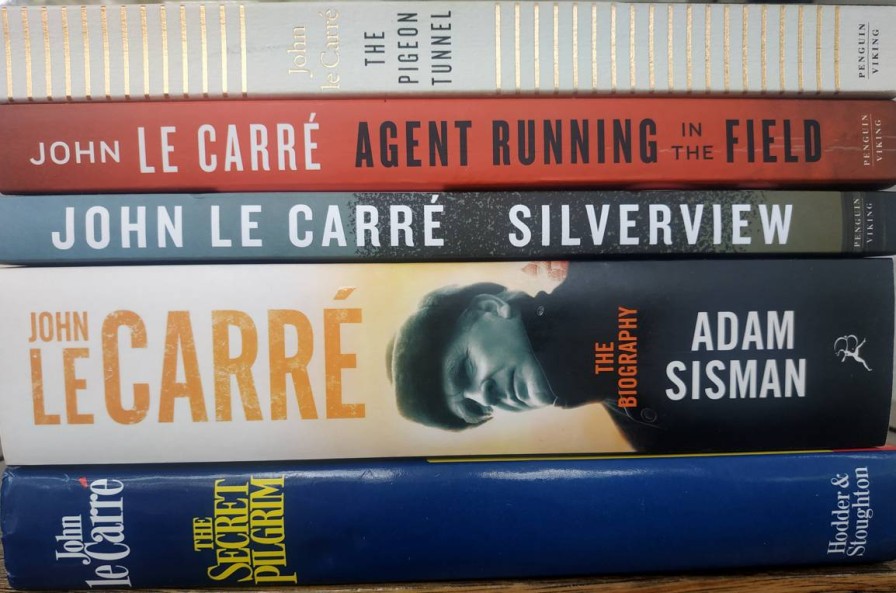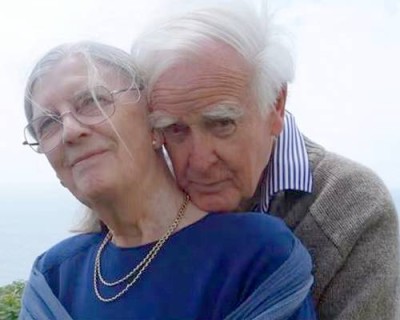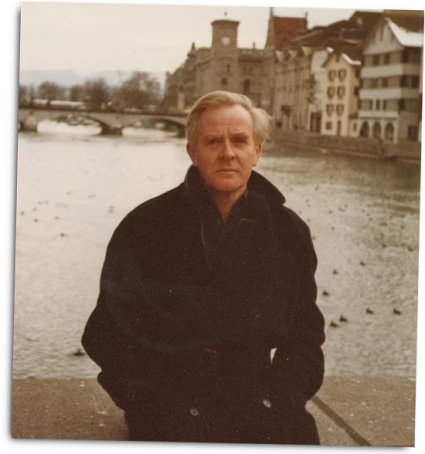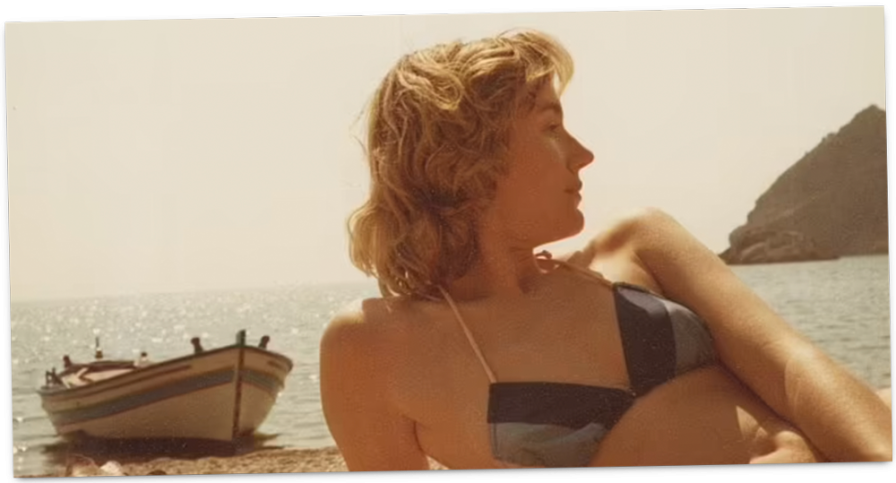

Mistress as muse: Spy novelist’s secret life
ANALYIS: John le Carré used his spycraft charm to seduce women for his characters.
WATCH: NBR columnist Nevil Gibson speaks with Calida Stuart-Menteath.


ANALYIS: John le Carré used his spycraft charm to seduce women for his characters.
WATCH: NBR columnist Nevil Gibson speaks with Calida Stuart-Menteath.
Few biographers have remained as closely attached and for as long as Adam Sisman to his subject, British spy novelist John Le Carré, the pseudonym for David Cornwell.
Sisman first approached the best-selling author in 2010, describing him the “definitive writer of the Cold War era” with books such as The Spy Who Came in from the Cold, Tinker Tailor Soldier Spy, The Little Drummer Girl, and The Night Manager, all made into successful movies or TV series (in some cases both).
Cornwell, who died 10 years later in December 2020, encouraged the project, giving dozens of interviews and saying while he didn’t want the stigma of an “authorised” biography, neither would he restrain the writer from his own conclusions.
The result was a mammoth work running to 652 pages and published in 2015. It was detailed enough to create the impression that nothing, however trivial, had been left out. But, three years after the death of Cornwell and his wife Jane, two months later in February 2021, has come the revelation that Sisman had made a deal not to include aspects of the Cornwells’ private lives.
During his research, Sisman uncovered evidence of Cornwell’s numerous affairs and liaisons with women outside of marriage, a habit that started after his writing career took off in 1963 with the publication of The Spy Who Came in from the Cold. That agreement has produced The Secret Life of John le Carré, a concise account of his most important affairs.

Biographer Adam Sisman.
In 1954, Cornwell married the first woman he had slept with, Ann Sharp, whom he met while studying at Oxford University and spying on left-wing students for MI5. Together they had three boys and he was faithful until near their separation in 1968.
Cornwell became one the world’s best-known and wealthiest writers, settling into a life that he had always wanted; a far cry from his nightmare childhood, with a convicted criminal and cheating father, and a mother who wlked on them when David was just five.
A second marriage, to Jane Eustache, was pivotal to this success. She was highly educated, was well connected in publishing, and nurtured his writing skills and business arrangements throughout their lives. (George Orwell is an unlikely parallel.)
The couple first met at a publishing event in Birmingham in the late 1960s and they married in 1972 after Cornwell’s divorce. In her mid-30s, Jane was an ex-mistress of the man who became Cornwell’s literary agent and she wanted a family. Cornwell was 40 when his fourth son, Nick, was born.

Jane and David Cornwell.
“Without much effort I was able to identify 11 women with whom he had had affairs during the first 30 years of the marriage [to Jane],” Sisman states. Three had died before he began the biography, two refused to talk to him, and six agreed to be interviewed and make up the focus of the book.
This may sound like the formula for a prurient dive into voyeurism and gossip. But Sisman is too much of the methodical scholar. He links each of the women to le Carré’s characters, while identifying the key elements of his sexual drive. Many of the women were younger, some much so. Some were wives of people he knew, including a ménage à trois with fellow writer James Kellaway and wife Susie.
“When David decided to seduce a woman, he would pursue her relentlessly, using the manifold gifts at his disposal. A handsome man even in late middle age, he could be scintillating company, witty and attentive, with a fund of entertaining stories and a deep reservoir of experience to draw upon,” Sisman states.

David Cornwell in 1984 during his affair with Suleika (Sue) Dawson.
Cornwell was adept at making women feel missed and desired. He encouraged those with literary ambitions. But he could drop them just as quickly, though some turned into long-lasting friendships, and one was reprised after a 13-year gap. He explained to Sisman this urge was a “restless, self-destructive search for love” that had its origins in his unhappy childhood.
One aspect stands out in the contribution of these erotic urges to his creative writing: his desire to keep his affairs secret from Jane. Though this was unsuccessful, the women interviewed and his letters to them reveal a range of spycraft tactics, such safe houses, dead letter drops, the use of disguises, hotel aliases, and introducing the women as a secretary or researcher when as a couple they were encountered in public by someone they knew.
Though Sisman provides most of the names, few will be known to the reader, except for the Kennaways, whose three-way relationship was scandalous at the time and the subject of The Naïve and Sentimental Lover (1971).
Not previously known was another author’s wife who caught Cornwell’s fancy. Verity Mosley, later Baroness Ravensdale, was married to the novelist Nicholas Mosley (Baron Ravensdale), son of British fascist leader Sir Oswald Mosley and who died in 2017 aged 93. This affair between two married people ended when Jane discovered one of Verity’s boots in the family car.

Novelist Nicholas Mosley.
One publicly known intimate relationship, mentioned in the original biography, was with Yvette Pierpaoli, a dynamic French crusader for social justice who died in a car crash in 1999. She was the inspiration for Tessa Quayle, heroine of The Constant Gardener (2001).
Among those not previously identified, but who are recognisable from the books, was a Sheffield-born fashion model who had changed her name to a more exotic foreign one. She turned up as Liese Worth, mistress of Hong Kong tycoon and Soviet agent Drake Ko in The Honourable Schoolboy (1977). In real life, she later married an English aristocrat.
Another identified for the first time was an Arabic-speaking American and pro-Palestinian activist, who died in the attack on the US Embassy in Beirut in 1983. She was the basis for the titular central figure of The Little Drummer Girl (1983).
An attractive young woman in her 20s, with a reputation as a femme fatale, worked with Cornwell on his audio books. Identified as Sue Dawson, they had an intense affair from 1982 to 1986, which included luxurious trysts to Greece, Germany, and Switzerland as Cornwell researched his plots. He used lots of ruses to disguise her status as his mistress. They resumed their affair in 1999, when she was 40 and he was 67. In 2022, under the name Suleika Dawson, she wrote a salacious book about their relationship.

Sulieka (Sue) Dawson in Greece during her affair with David Cornwell.
A black American admirer in her 40s wrote an unsolicited letter to Cornwell in 1993. He responded and their highly explicit correspondence lasted for two years though they only met once for a wild weekend. Descriptions from their penpal passion turned up in The Tailor of Panama (1996). An Italian journalist in her early 40s was the model for Katya in The Russia House (1989).
The pseudonymous le Carré told Sisman his infidelities “produced in my life a duality and tension that became almost a necessary drug for writing”, not “separate from the ‘high literary calling’, so to speak but, alas, integral to it, and inseparable”. To Sisman, they energised Cornwell’s world, acting as a substitute for espionage and giving relief from the tedium of the writer’s solitary life.
Le Carré’s stature continues to grow after his death. In recent years, some lesser but nevertheless interesting novels such as Silverview and Agent Running in the Field have been released, while the autobiographical The Pigeon Tunnel has been turned into an Apple+ documentary.

The Secret Life of John le Carré, by Adam Sisman (Profile Books).
Nevil Gibson is a former editor at large for NBR. He has contributed film and book reviews to various publications.
This is supplied content and not paid for by NBR.